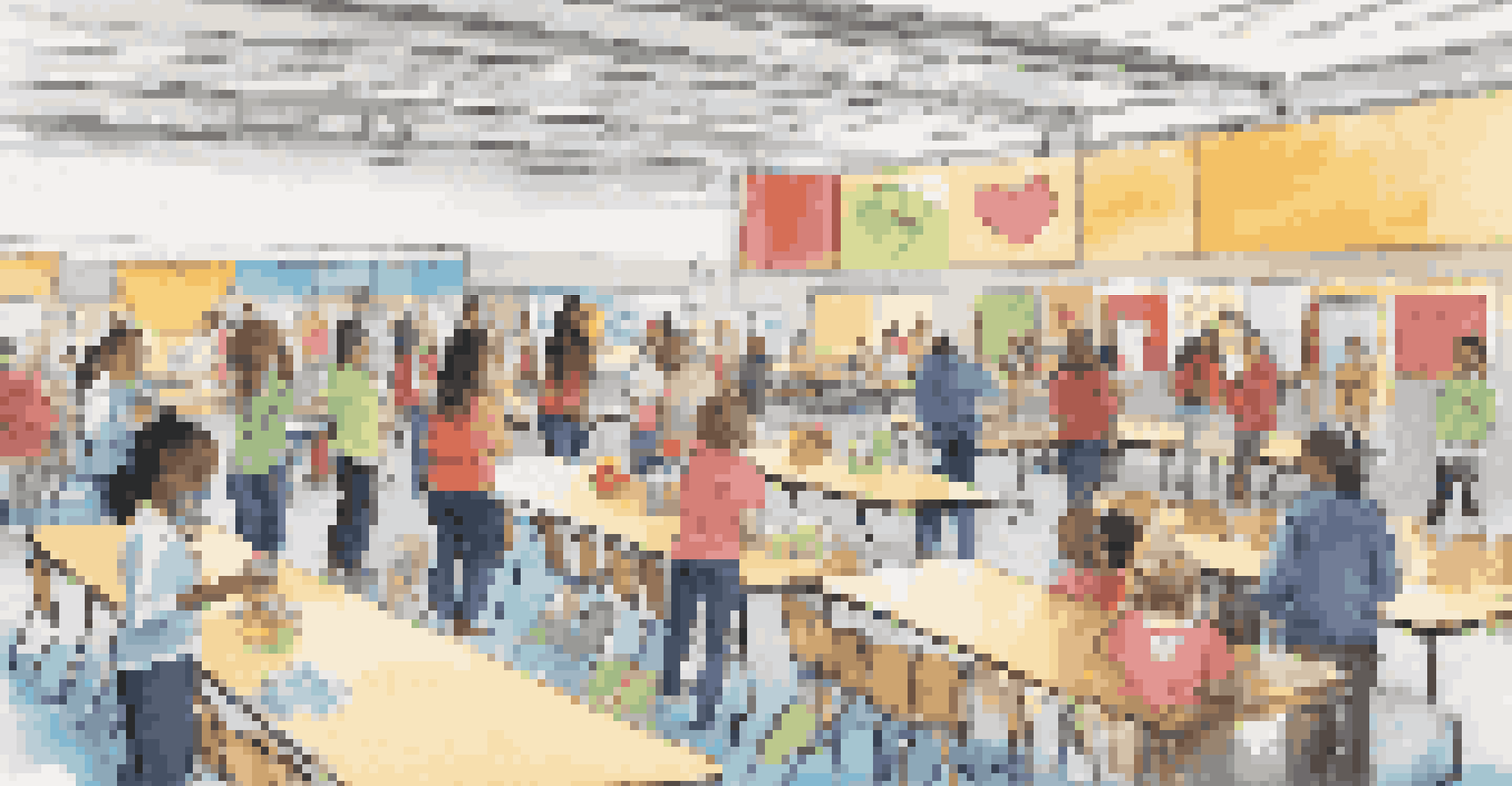Building Health Literacy in Schools: Engaging Young Minds

Understanding Health Literacy: What It Means for Students
Health literacy refers to the ability to obtain, process, and understand basic health information. For students, this means being able to make informed decisions about their well-being. It’s not just about reading a nutrition label; it’s about understanding how choices affect their health now and in the future.
Health literacy is the foundation of a healthy community.
When students grasp health literacy, they can navigate the often-overwhelming sea of health information available today. This skill set empowers them to critically evaluate sources, discern fact from fiction, and advocate for their own health needs. Imagine a teenager confidently discussing the benefits of mental health breaks or the importance of balanced nutrition.
Building health literacy is essential not just for individual well-being but for fostering a healthier community. The more informed our youth are, the better equipped they will be to contribute positively to society. This journey starts within the walls of our schools.
Why Schools Are Crucial for Health Literacy Education
Schools serve as a primary environment for young people to learn and grow. This makes them an ideal setting for teaching health literacy. With children spending a significant amount of their time in school, educators have a unique opportunity to influence their health knowledge and behaviors.

Moreover, schools can provide a structured approach to health education, combining academic learning with practical application. For instance, integrating health topics into science classes can help students connect the dots between what they learn and how it applies to their daily lives. Think of a science lesson that includes discussions on how the body processes food.
Health Literacy Empowers Students
Understanding health literacy allows students to make informed decisions about their well-being.
By prioritizing health literacy, schools can foster a culture of wellness, promoting healthy habits that can last a lifetime. This focus not only enhances academic performance but also contributes to overall student well-being, making it a win-win situation for everyone involved.
Engaging Students Through Interactive Learning Methods
Interactive learning methods can transform traditional health education into an engaging experience. Activities like role-playing, group discussions, and hands-on projects can help students grasp complex health concepts. For example, simulating a grocery shopping trip can teach them how to read labels and make healthier food choices.
The greatest gift is the ability to share your knowledge and educate others.
Incorporating technology can also enhance engagement; think apps that track nutrition or virtual reality experiences that expose students to various health scenarios. These tools not only make learning fun but also relevant, allowing students to see the direct impact of their choices. When learning feels like an adventure, students are more likely to participate actively.
Ultimately, engaging students in their health education encourages them to take ownership of their health journeys. When they feel involved and invested, they are more likely to apply what they learn in real-life situations, leading to healthier lifestyle choices.
Utilizing Community Resources for Health Literacy
Community resources play a vital role in enhancing health literacy in schools. Local health organizations, hospitals, and wellness initiatives can partner with schools to provide valuable resources and expertise. For instance, hosting workshops or health fairs can bring real-world health knowledge directly to students.
These partnerships can also create mentorship opportunities, connecting students with health professionals who can share their experiences and insights. Imagine a nurse visiting a classroom to discuss the importance of vaccinations or a dietitian leading a cooking demonstration. Such interactions can make health topics relatable and inspiring for students.
Schools Enhance Health Education
Schools are key environments for teaching health literacy, integrating it into daily learning and activities.
By tapping into community resources, schools can enrich their health education programs, making them more comprehensive and impactful. This collaboration not only benefits students but also strengthens community ties, creating a shared commitment to health and wellness.
The Role of Parents and Guardians in Health Literacy
Parents and guardians play a crucial role in reinforcing health literacy at home. When they engage with their children about health topics, it creates a supportive environment for learning. Open discussions about topics like nutrition or mental health can foster a culture of health awareness that extends beyond school walls.
Encouraging family activities centered around health, such as cooking nutritious meals together or participating in community sports events, can also enhance health literacy. These shared experiences not only strengthen family bonds but also instill lifelong healthy habits in children. Think of a family bike ride—it's exercise, fun, and a valuable lesson all in one.
Ultimately, when parents and guardians are involved, students are more likely to internalize the importance of health literacy. This partnership between home and school creates a consistent message, empowering young people to make informed health decisions.
Developing a Curriculum that Prioritizes Health Literacy
Creating a curriculum that prioritizes health literacy requires thoughtful planning and collaboration among educators. It’s essential to integrate health topics across subjects rather than limiting them to standalone classes. For example, mathematics can involve calculating calories, while literature can include reading about health-related themes.
Moreover, incorporating current events related to health can make lessons more relevant and urgent. Discussing topics like the latest nutrition guidelines or the impacts of climate change on health fosters critical thinking and awareness among students. This approach not only educates but also encourages active engagement with the world around them.
Community Resources Strengthen Learning
Partnering with local health organizations enriches health education in schools and fosters community ties.
A well-rounded curriculum that emphasizes health literacy prepares students to face real-world health challenges. By equipping them with the knowledge and skills needed to navigate these issues, we are ultimately investing in a healthier future.
Measuring the Impact of Health Literacy Programs
To understand the effectiveness of health literacy programs, it's essential to measure their impact. This can involve assessing students' knowledge before and after interventions, such as health workshops or curricula changes. Surveys, quizzes, and feedback forms can provide valuable insights into how well students are grasping the concepts taught.
Additionally, tracking behavioral changes can offer a more comprehensive view of the program's success. Are students making healthier food choices? Are they more active? By observing these changes, schools can gauge the real-world implications of their health literacy initiatives.

Regular assessment not only highlights successes but also areas needing improvement. By refining programs based on feedback and results, educators can ensure that health literacy remains relevant and effective in equipping students for a healthier future.